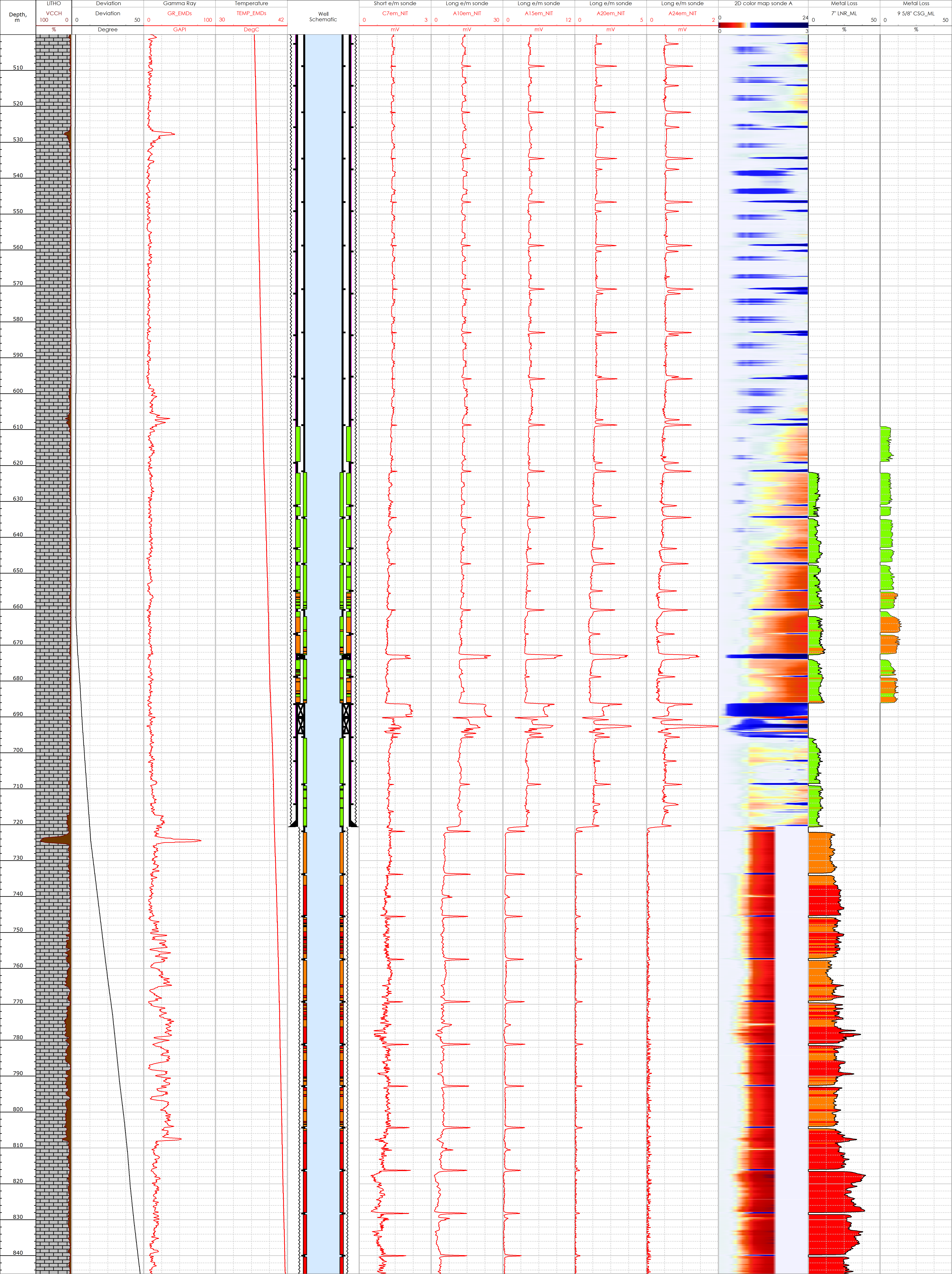Integrity Challenge
It is important to have a good cement bond in the annulus, for example by using a multistage packer and having adequate centralization. External coating on the outer pipe will lessen the risk of corrosion on the outer pipe which will also minimize corrosion migration from the outer pipe to the inner pipe. This is especially key if the outer pipe has poor cement quality or no cement and is exposed to a corrosive aquifer. Multiple barrier failure can lead to catastrophic consequences such as an oil leak to surface which could result in harm to personnel, the environment, the asset and company reputation.
Corrosion Logging Result
One example of sub optimal external coating on the outer casing is shown below:
The well is a horizontal electrical submersible pump (ESP) oil producer drilled in 2010. The well was completed with a 9 5/8” surface casing with external coating from 384 m to 686 m (casing shoe) and a 7” intermediate liner. 4.5” wire wrapped screens (WWS) were installed across the horizontal open hole section. A 3.5” ESP completion string was run with the top of the pump at 615 m.
In 2015 after 5 years of production, EMDs logging was conducted to 610 m (5 m above the top of the pump). Corrosion logging data did not reveal the presence of metal loss in both the 9 5/8” casing and the completion string across the entire logging interval.
In 2018 a Hoist attended the well with the objective to replace the failed ESP pump. The completion string was pulled and a retrieval bridge plug (RBP) was run and set at 676 m (10 m above the casing shoe). A successful pressure test was conducted however a decision was made to run a 7” scab liner. A 3.5” completion string was run.
In 2023 due to a pump failure a Hoist attended the well. The completion string was pulled and a RBP was run in the hole to 760 m to pressure test the scab liner. However, a number of attempts to set the RBP failed. The RBP was pulled to surface and a corrosion log was recorded from 845 m to surface. The log data revealed the presence of severe, moderate and minor metal loss in the 7” intermediate liner. In addition, there was an extended interval of minor corrosion in the 7” scab liner from 620-685 m. Furthermore, an extended interval of moderate and minor corrosion was detected internally in the 9 5/8” casing from 608-720 m (casing shoe) across the externally coated area. It appeared that corrosion initiated across the deviated section of the 7” intermediate liner and moved upwards to the liner hanger. Corrosion then migrated to the internal surface of the 9 5/8” casing. When the well had a scab liner installed the corrosion moved up from the intermediate liner to the scab liner.
It is evident from the log data that the corrosion in this well was very aggressive. The external coating on the 9 5/8” casing protected the external wall of the casing from the corrosive aquifer. However internal corrosion existed due to contact with corrosive fluids in the internal surface of the pipe.
Conclusion
External coating is effective in mitigating corrosion on the coated areas of the pipe. It does not provide protection to the uncoated areas of the pipe or the internal surface of the pipe. Consideration should also be given in future well designs to incorporate coating on the internal surface of the pipe to minimize corrosion.
All case studies
Looking for more information?
Get in touch with us and our representative will get back to you
Contact Us



